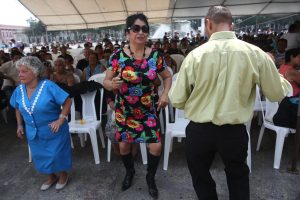Guatemala City, Feb 20 (EFE).- Hundreds of people danced and sang this Monday to the marimba, a percussion instrument related to the xylophone that is considered native to Guatemala, and which this February completes its second year as an instrument of Cultural Heritage of the Americas.
On this historic date, the Guatemalan capital paid tribute to the music-maker with a celebration attended by a number of government authorities, like Culture and Sports Minister Jose Luis Chea, who called the marimba the backbone of the nation and said “I want people to dance and applaud this star.”

“It is a symbol of our nation and the backbone of our cultural identity,” the official said during his speech, in which he announced that, in order to return to the people what belongs to the people, this year construction will be completed of a national marimba school at the Miguel Angel Asturias Cultural Center, a work for which 12 million quetzals (some $1.6 million) have been set aside.
The marimba is an instrument that, by means of its diatonic and chromatic set of wooden bars, has made a major contribution to harmonies and melodies around the world, not just in Guatemala.
And while its origin is a cause for debate, it is also associated with other Central and South American countries.
The instrument is made up of 78 wooden bars, which, upon being struck with mallets, transmit the sound to their respective resonator tubes made of bamboo, wood or metal.
At this cultural celebration, members of the Concert Marimba Fine Arts and the Elias Garcia School of Music in San Juan Sacatepequez, among others, offered a series of marimba concerts throughout the day that encouraged Guatemalans, either in couples or solo, to get up and dance.
All the color and music united for the day a population marked by great social differences and the scourges of violence and poverty.
The Organization of American States (0AS) named the marimba a Cultural Heritage of the Americas on Feb. 12, 2015.
